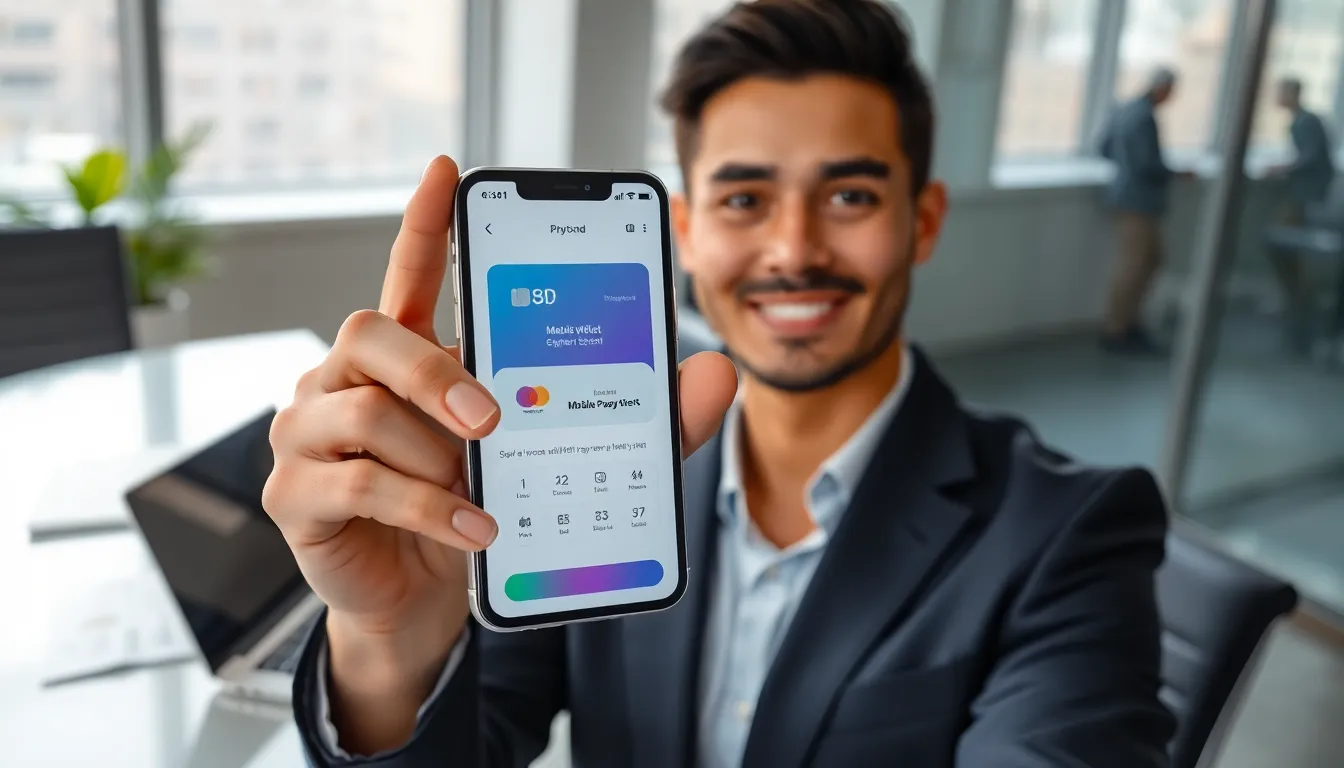In the fast-paced world of fintech, where every second counts and every click matters, UX design isn’t just important—it’s essential. Imagine trying to navigate a financial app that feels like solving a Rubik’s Cube blindfolded. Frustrating, right? That’s why savvy companies are investing in top-notch UX design to ensure their users enjoy a smooth ride through the often bumpy financial landscape.
Fintech UX design combines creativity with functionality, turning complex processes into seamless experiences. It’s the secret sauce that transforms a user from confused to confident. With the right design, even the most daunting financial tasks can feel as easy as ordering a pizza. So buckle up, because diving into the world of fintech UX design reveals how great design can not only attract users but keep them coming back for more.
Table of Contents
ToggleOverview Of Fintech UX Design
Fintech UX design focuses on creating intuitive experiences for users in financial applications. User interactions must remain seamless across multiple devices, including smartphones, tablets, and desktops. Effective UX design caters specifically to user needs while simplifying complex financial tasks.
Research indicates that 70% of users abandon unfinished transactions when facing poor user experience. Navigation structures must remain clear and straightforward to avoid this pitfall. Visual hierarchy plays a crucial role in guiding users through financial tools, promoting ease of use.
Integrating feedback mechanisms enhances product development. Regular user testing ensures that designs resonate with target audiences. Fintech designers prioritize accessibility, allowing individuals with disabilities to use financial services without barriers.
Trust stands as a cornerstone of successful fintech UX design. Users feel more secure when interfaces reflect reliability and transparent information. Secure login processes and clear data privacy policies contribute significantly towards establishing user confidence.
Responsive design remains essential. Apps must adapt fluidly to various screen sizes while maintaining functionality. A mobile-first approach aligns with the growing trend of users accessing financial services predominantly through mobile devices.
Engagement features also provide added value. Personalization through user data can help tailor experiences that resonate with individual preferences. By facilitating enjoyable interactions, fintech UX design ensures users remain invested in their financial journeys.
Importance Of User Experience In Fintech

User experience (UX) in fintech plays a pivotal role in how users interact with financial services. A well-designed UX builds trust, reassures users, and enhances their overall satisfaction.
Enhancing User Trust
Building user trust is essential in fintech. Secure login processes reduce anxiety, making users feel safer when handling sensitive information. Transparency in fees and data usage fosters confidence and clarity. Trust signals, like SSL certificates, also reassure users about security measures. Research indicates that 67% of users cite trust as a critical factor in choosing a financial app. Companies that prioritize trust in their design increase user retention and encourage longer engagement with their services.
Simplifying Complex Processes
Simplification of complex processes often transforms user experience. Streamlined workflows enable users to navigate tasks efficiently, minimizing frustration. Clear language and intuitive navigation guide users seamlessly through financial operations. Visual aids, such as progress bars and tooltips, make intricate tasks more manageable. Statistics reveal that 70% of users abandon transactions due to confusion over complex interfaces. Fintech apps that invest in simplifying these experiences often see higher completion rates and increased user satisfaction.
Key Principles Of Fintech UX Design
Fintech UX design relies on several key principles that enhance user experiences and engagement. These principles guide designers in creating intuitive applications that meet user needs.
User-Centric Approach
User needs drive UX design in fintech. Focusing on the end user results in applications that are both functional and engaging. Research indicates that 70% of users leave due to poor experiences, highlighting the importance of usability. Incorporating user feedback during the development process ensures designs remain relevant. Iterative testing allows for the refinement of features based on real user interactions, addressing pain points effectively. Additionally, personalization helps create tailored experiences, which foster increased user satisfaction and loyalty.
Accessibility And Inclusivity
Accessibility acts as a fundamental element in fintech UX design. Financial applications must cater to diverse user groups, including individuals with disabilities. Over 15% of the global population lives with a disability, emphasizing the necessity for inclusive design. Implementing features such as screen readers, voice commands, and adjustable text sizes enhances usability for all users. Clear navigation and simplified language support understanding for those unfamiliar with financial terminology. Prioritizing accessibility cultivates trust and ensures a wider audience can confidently engage with financial services.
Best Practices In Fintech UX Design
Fintech UX design focuses on creating intuitive and effective experiences for users in the financial sector. This section highlights best practices that enhance usability and satisfaction.
Effective Use Of Visuals
Visuals play a crucial role in fintech design. Clear icons and engaging graphics guide users through complex information. Effective use of color can indicate statuses like alerts or confirmations, ensuring users understand their interactions. Presenting data through charts and infographics makes financial information more digestible. Simplicity in visual design minimizes distractions and keeps users focused on their objectives, leading to better decision-making. Studies show that 60% of users prefer applications with strong visual elements, emphasizing the need for appealing interfaces.
Designing For Mobile Platforms
Mobile-first design is essential in fintech. Approximately 75% of users access financial services on mobile devices. Streamlined navigation ensures quick access to critical features, allowing users to manage finances effortlessly. Touch-friendly interfaces improve interactions, reducing frustration while performing tasks. Prioritizing responsive designs creates seamless experiences across various screen sizes. Implementing adaptive elements ensures applications remain visually appealing and functional regardless of the device. User testing on mobile platforms helps identify issues unique to these environments, enhancing overall satisfaction and retention.
Case Studies In Fintech UX Design
Examining real-world examples illustrates the impact of effective UX design in the fintech industry. Notable successes emphasize the importance of user experience.
Successful Fintech Apps
Apps like Robinhood and Mint exemplify best practices in fintech UX design. Robinhood’s interface prioritizes simplicity, allowing users to trade stocks easily. With a sleek design and clear pathways, new investors feel empowered while using the app. Mint enhances financial tracking through intuitive navigation and streamlined budgeting tools. Users appreciate its clean layout, which encourages regular engagement. Research indicates that fintech apps focusing on user-centered design increase retention rates, reinforcing brand loyalty.
Lessons Learned From Failures
Numerous fintech apps have faced challenges that highlight critical UX missteps. Simple mistakes, like confusing interfaces, contributed to significant user abandonment. For example, a popular peer-to-peer payment app experienced a steep drop in usage due to its complicated onboarding process. Users struggled to navigate the setup, leading to frustration and disengagement. Data suggests that up to 70% of users exit due to poor experiences. These failures underscore the necessity of user feedback and responsive design in creating effective financial applications.
Conclusion
Fintech UX design is a vital component in shaping user experiences within the financial sector. By prioritizing usability and trust, companies can create applications that not only meet user needs but also foster long-term engagement. The emphasis on responsive and mobile-first design ensures that users can effortlessly navigate financial tools on any device.
Moreover, incorporating accessibility features and simplifying complex processes can significantly enhance satisfaction and retention rates. As the fintech landscape continues to evolve, the focus on user-centric design will remain crucial for attracting and retaining a diverse audience. Ultimately, effective UX design is not just about aesthetics; it’s about building confidence and trust in financial services.





